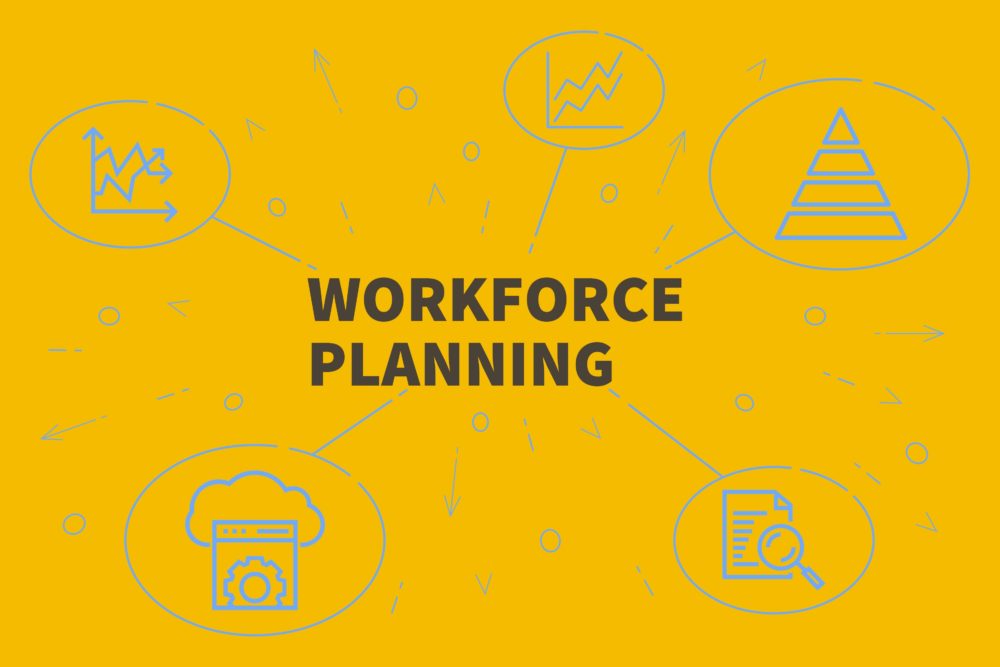A common misconception is that strategic workforce planning (SWP) – the proactive business process that helps firms develop an early view of their future workforce needs – is a large-scale, high-cost undertaking, only effective in big businesses.
While this is true in some instances, making a case for its validity within fast-growing, ambitious SMEs can be easily achieved through smaller, more focused SWP projects.
In fact, our recent research into 200 businesses highlighted that although 84 per cent of SME respondents had ambitious growth plans, only three per cent had embedded SWP. On this basis, there is plenty of room for owners, managers and those looking to make an impact in their SME organisation to explore SWP as a pragmatic solution to getting the right people, at the right time, helping accelerate growth.
SME owners often take a highly reactive approach to recruitment, owing to the nature of new business opportunities and the challenges associated with getting a start-up off the ground. Yet the benefits of thinking more long-term when it comes to talent needs cannot be underestimated.
What is strategic workforce planinng?
The SWP process tackles some of the issues caused by reactive hiring and looks beyond a six to 12-month period, helping organisations understand how the next two to three years could unfold. This involves examining internal and external data, demographics and global trends, all with a business’ strategy in mind, before mapping out possible scenarios that may follow. Using this rich understanding, firms can recruit more effectively, rather than ‘panic hire’, which carries the risk of bringing in the wrong talent.
For large organisations, equipped with the money and resources to dedicate to SWP, this often includes bringing together multi-disciplinary teams made up of Finance, HR and key business stakeholders to drive these projects. A great example is retail giant John Lewis, which used SWP to predict and understand changing consumer demands before hiring in response, delivering a more technology-focused, omnichannel offering for customers, way ahead of its competition.
“Using this rich understanding, firms can recruit more effectively, rather than ‘panic hire’, which carries the risk of bringing in the wrong talent”
When it comes to SMEs, SWP can still be hugely effective, especially when run on a smaller, more focused scale, led by the likes of the chief executive, founder or managing director alongside the HR function, if they have one.
What’s in it for me?
While the SWP opportunity is there for the taking, our results show it has not yet taken hold in the SME market. But, as this area becomes increasingly dynamic, volatile and complex – due to the likes of new technology and political and economic uncertainty – strategic workforce planning is a sure-fire way of seeing around corners, upping agility and staying ahead of the competition.
Instead of considering it a non-essential item on the agenda, businesses should look to make SWP practice an integral part of their growth plans, dedicating time and resource to initiate it effectively.
This means identifying small numbers of strategic hires that will be most intrinsic to business objectives or a particular growth cycle. These are not necessarily senior hires, but ones that will have the most value and impact on executing the business strategy. This could be as simple as introducing technology roles if the company is experiencing digital disruption, personable people who can strengthen relationships with clients for a service provider, or individuals with backgrounds in e-commerce and marketing for a product-led SME to boost sales.

The SWP basics
Before exploring SWP, SMEs need to lay the groundwork. This means ensuring the individual or team leading the project can clearly articulate their firm’s overall business strategy, before comparing it to the workforce they currently have. A thorough assessment should follow of the data they have available to them, both internally and externally, which will help create a holistic picture of the factors influencing, or that may influence, the business.
Applying this information, project managers can begin to map out scenarios based on situations that might play out in two to three years’ time, identifying where gaps might exist in their future workforce.
Testing SWP is about being selective, choosing which hire or hires may have the most positive impact on growth and execution, before continually monitoring and evaluating the pilot from hunt to hire.
Used effectively, SMEs can start small with strategic workforce planning and use it to become more resilient and competitive in the markets in which they operate. Embracing SWP earlier on in the journey will create a road map for success and create competitive advantage, with people at the heart of the business.
Kate Parker is head of Berwick Talent Solutions.





